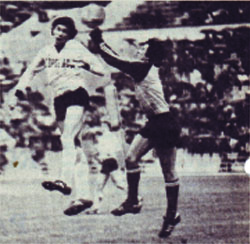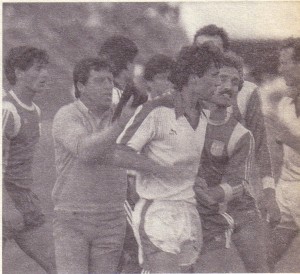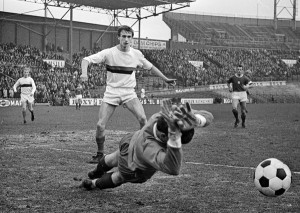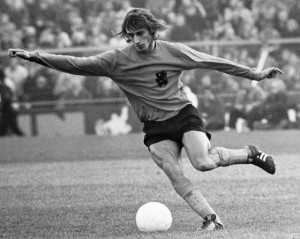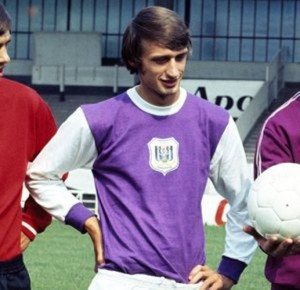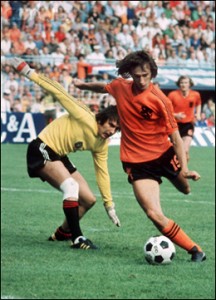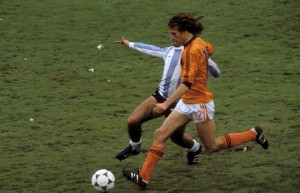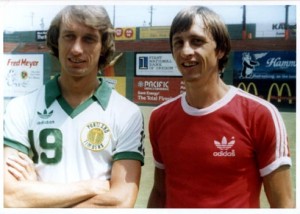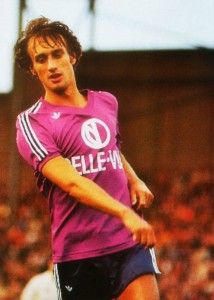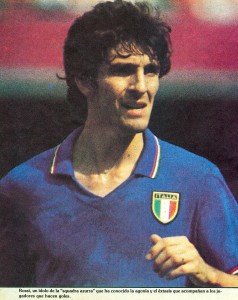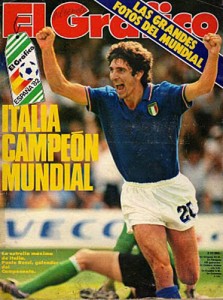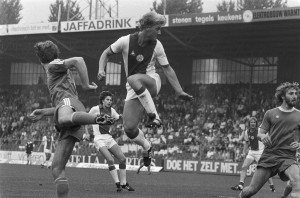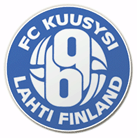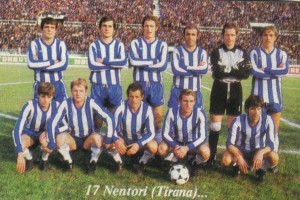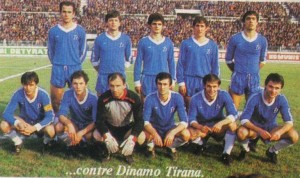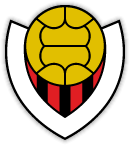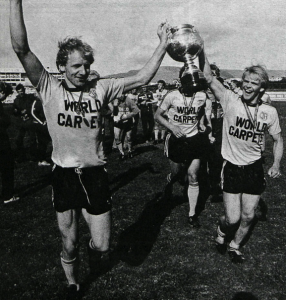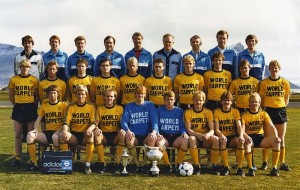1983
One major international tournament this year – Copa America. Hardly noticed outside the continent, but, retrospectively, the final provides food for thought. This year does not stand out with anything memorable, so from the distance of time the Copa America final practically shows not only why, but also the deterioration of football in the 1980s. Two-legged final, played between Brazil and Uruguay. Younger football fans, knowing only the game after 1995 would be terribly surprised, if watching the final, especially the first leg. It was sheer murder: kicks, punches, elbowing, two mass fights, involving both entire teams, Leandro attacked one of the kids passing the ball (still a single ball was used), and the fans were ready to invade the pitch and lynch him (not for nothing Estadio Centenario has moths filled with water between the stands and the pitch), which was followed by brief boxing match between Leandro and Uruguayan player very offended by his attack of the kid. The referee blew the whistle every minute, and that was after having been lenient for the offenses committed in the minute between calls. Brutal game from start to finish – today it would have been done with no later than the 10th minute because there would be not enough players left to continue (the only clean player this day was the Brazilian goalkeeper Leao). Not back than… note: there were only 2 yellow cards! Not a single player left the game injured. The kicks were viscous, yet simulations did not last long – it was difficult to say how much was real pain and how much theatrics. The referee had no friends, so he was rushed by many players, sometimes by the whole teams, protesting whatever call was made. Seemingly, the biggest arguments erupted about the proper place of the ball for a free kick – especially those, when the attacking team was called against and the ball was in the penalty area. It was an absurd: the goalkeeper, no matter what, would not endanger the other team with his long kick ahead to the field, but the fight for every centimeter was enormously hot. Literally for a single centimeter. Yet, the tempo was frantic, the fight for the ball was massive and covered every inch of the pitch, so at the end of the first half there no grass left – it was like freshly plowed field. The defensive walls were no more than 5 meters away from the ball and there was not even an attempt of the ferefee to move them back to the proper distance. And the walls were at least that far – solitary defenders not part of the walls were hardly more than 3 meters away from the ball. Yet, it was entertaining match – that is, the time when football was actually played between referee’s calls. And the big ugly news: in both legs the better team did not win – Brazil lost in Uruguay, than Uruguay managed only a tie after completely dominating the second half in Brazil. It was exactly what Paul Breitner said a year earlier: football is a war and only victory matters, achieved no matter how. So it was no longer the better team wins, but rather the opposite.
What would be also very strange for a contemporary viewer was the absence of many ‘vital elements’ of today’s football. There were no coaches walking like tigers in a cage, constantly shouting, abusing referees, trying to rush on the pitch, waving their hands, jumping, kicking, etc. There were no players going into tantrums against the grand offense – having been substituted. These players hardly had ‘feelings’ – no one seemed ‘unhappy’ for been cursed at, or unable to kick the ball, or someone may be said something about his sister. God was no present either – no elaborated rituals, prayers, undershirts with slogans, pointing at the sky, where God dwells, after a goal was scored. A few players – curiously, mostly Uruguayns, the least religious nation in South America – crossed themselves when coming to the pitch, but that was all. Nobody rushed to TV cameras to show how great he is, simultaneously shouting endless thanks to his mother, father, wife, her sister, and the family dog. Nobody dies after the first clash with opposite player, no stretchers were rushed to take the done for victim to the emergency hospital. Watching those old players taking so many terrible kicks is a huge contrast to today’s players, half of which get injured before the seasons stars and the other half is dead tired after 5-6 games. And another thing – the ball was not a foreign and hostile object, which has to be conquered somehow and after a great deal of training, much care, and in a lucky day a player may actually handle briefly – the ball was a problem and concern: it was almost a natural part of the body. Great skills, obvious in a very harsh environment. In which many players and especially the most vulnerable strikers played without shin pads. Frankly, I cannot see Cristiano Ronaldo playing in such a match – he will run away and cry.
But the high tempo, the pressing and fighting for every ball anywhere, and the brutality made the match chaotic. There was nobody in control, nobody with cool head and ability to slow down and organize his team. That was why the visibly better team was unable to win. A matter of tactics – and here the second leg will be included to complete the picture. It was slightly different – the tempo was slower, the ugliness a notch down, the attacks better organized. In the first leg Brazil played without Socrates, but he played the second leg immediately making the difference: suddenly there was empty space on the pitch and Brazilian attacks were much better organized. But… this served Uruguay better. If one watches the first leg carefully, very carefully, something eventually becomes clear – Uruguay was essentially defensive team, depending on occasional counter-attacks. They were always that, but under their new coach the brutality was on new higher level, Uruguay was just like a swarm of angry wasps attacking everything in sight. However, the match was in Montevideo, so Brazil was not only more defensive itself, but Uruguay had to push forward – and the basic tactical concept did not allow it. They had no playmaker – instead, the ball was passed to one of the speedy wingers. This worked in counter-attacks, when the opposite half of field was empty and sole winger can outplay one or two surprised defenders, it depended on individual skills. But in crowded environment and when attacks had to be carefully organized it did not work at all – Uruguay was toothless, virtually having only three shots at the Leao’s net (but those shots proved to be deadly, all ending in the net – one goal was disallowed). Thus, Leao had nothing to do at all (and nothing to be blamed for three goals – he had no chance every time). Instead, Brazil was more dangerous and with many opportunities to score – Rodolfo Rodriguez was actually the big hero of the first leg, he saved everything – the most dangerous 2 balls came from clumsy action of his own defenders. Brazil, rushing too and without organization, missed all chances. In the second leg Brazil was seemingly stronger form the start – now Socrates was organizing its attacks. Yet, the slower tempo benefited the defensive team – time was running against Brazil on one hand, on the other Brazil had no option but rush in attacks, thus providing opportunities for dangerous counter-attacks. Suddenly Leao had much more work than Rodriguez. By the 60th minute Uruguya managed to neutralize Brazil and get the upper hand – and to the end of the match it was dominating by quickly killing increasingly frustrated Brazilian efforts to organize attacks, moving immediately into counter-attacks. Uruguay did not have to win this match, but the irony remained – Brazil was better and lost the first leg. Uruguay was better and did not win the second leg. That was the new football of the 1980s – speedy and covering the whole field, elements clearly taken from total football; merciless and cold murderous tackles everywhere, which were part of the tactics, elements introduced mostly by late 1970s West Germany; cynical approach to the game – just extarct a win, no matter how and to hell with beauty – formulated by Paul Breitner in 1982. Football was war. It was no longer exciting show – the whole excitement was left for the moment after the final whistle, when embattled soldiers, hardly staying on the feet, bruised and limping had a moment to smile after a hard work on the battle field: they were ugly killers, half-dead themselves, who pleased no one, but they won. Frankly, there was little to watch anymore – the beautiful game was dead. No wonder violence spread rapidly outside the field and the new fans – the ultras – emerged: they hardly cared for the game, they were just the 12th soldier going to war, invading cities, clashing with opposite armies and generally destroying everything on their way. And the rules of the sport no longer worked – they were increasingly used just as a war tool, entirely against their spirit.
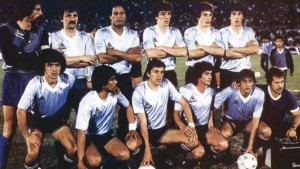 Here they are – the new breed of warriors. They fought their way to one more South American title, but the world saw them and was scandalized by them in 1986.
Here they are – the new breed of warriors. They fought their way to one more South American title, but the world saw them and was scandalized by them in 1986.
